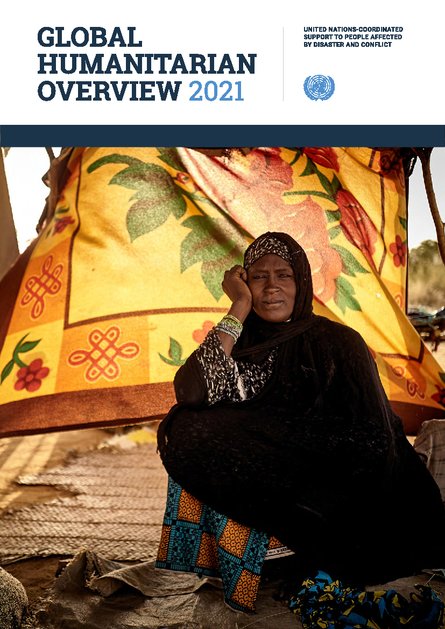
Global trends highlighted in this OCHA report include:
COVID-19 has triggered the deepest global recession since the 1930s. Extreme poverty has risen for the first time in 22 years, and unemployment has increased dramatically. Women and young people aged 15 – 29 working in the informal sector are being hit the hardest. School closures have affected 91 per cent of students worldwide.
Political conflicts are more intense and taking a heavy toll on civilians, disproportionately affecting children. Women and girls are at increased risk of conflict-related sexual violence. Attacks against aid and health workers persist. For the ninth consecutive year, more than 90 per cent of casualties from explosive weapons in populated areas were civilians.
The last decade saw the highest-ever number of people internally displaced by conflict and violence, with many locked in a state of protracted displacement. There are an estimated 51 million new and existing IDPs, and the number of refugees has doubled to 20 million.
Hunger is on the rise, with conflict the main driver of acute hunger for 77 million people in 22 countries. By the end of 2020, the number of acutely food insecure people could be 270 million. The impacts of the pandemic and climate change are seriously affecting food systems worldwide. Funding requirements for food security in humanitarian appeals have risen to $9 billion in 2020, up from $5 billion in 2015.
The last 10 years were the hottest on record. Increasingly severe and frequent weather events and natural disasters are exacerbating chronic vulnerabilities. Additional climatic changes are expected from La Niña through the first quarter of 2021, affecting sea temperatures, rainfall patterns and hurricane activity.
Disease outbreaks are increasing and the pandemic has hindered essential health services in almost every country. Hard won gains are at risk. More than 5 million children under 5 years of age face the threats of cholera and acute watery diarrhoea. The pandemic could wipe out 20 years of progress in HIV, TB and malaria, potentially doubling annual death tolls.
COVID-19 made life harder for already vulnerable groups, including women and girls, people with disabilities, older people and those with mental health needs. Almost 24 million children, adolescents and young people are at risk of not returning to school in 2020, including 11 million girls and young women.
Fear of the virus is spreading faster than the virus itself. The pandemic and measures to contain it, are revealing mental health and psychosocial consequences in all countries, particularly in humanitarian settings where resources for mental health and psychosocial support are either scarce or non-existent.
COVID-19 has shone a spotlight on the full extent of gender inequality and women’s and girls’ exposure to gender-based violence (GBV). Adolescent girls in conflict zones are 90 per cent more likely to be out of school, and 70 per cent of women in humanitarian settings are more likely to experience GBV. Globally, quarantine measures are exacerbating domestic violence, with 15 million new cases predicted for every three months of lockdown.
Young people are shaping global trends. Despite facing bleak employment prospects and the impacts of COVID-19, young people have mobilized at an unprecedented scale. This presents an opportunity for the humanitarian system to further integrate the perspectives and leadership of young people into humanitarian action.
Increased global Internet access and new innovative technologies offer the potential to improve humanitarian action. During the pandemic, artificial intelligence is being used for outbreak mapping, drones are delivering medical supplies and testing samples, and 3D printers are supporting the production of face shields and ventilators.
Collaboration between humanitarian, development and peacebuilding efforts has increased during the pandemic. Building on this cooperation will help meet the needs of the 160 million people targeted for humanitarian assistance in 2021.
